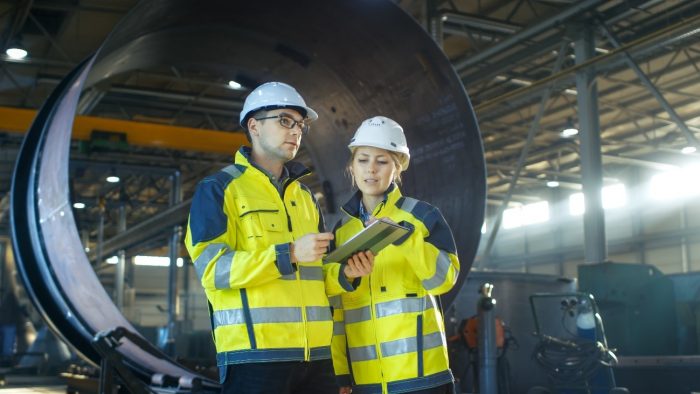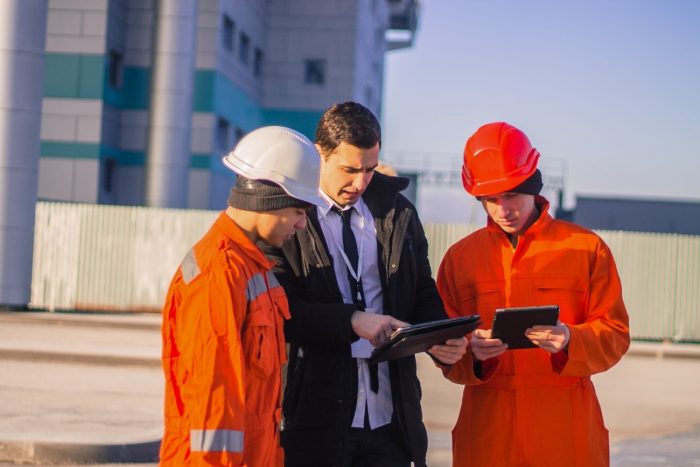Script & Go discuss the need for collaborative work in the construction industry, something that is crucial in today’s industry
There has been a global productivity problem for the construction and infrastructure sector for more than a decade. In a 2017 report from the McKinsey Global Institute (Reinventing Construction through a Productivity Revolution), it states that in just over 20 years, the global average productivity of the construction sector has grown at only 25% of the rate of manufacturing.
 To make matters worse, the average construction project is becoming increasingly complex. Various entities come together in linear stages to work on a project, information is gathered on an ‘as-needed’ basis, and knowledge is hoarded, not shared. This means that collaboration and communication between various parties is becoming harder and harder.
To make matters worse, the average construction project is becoming increasingly complex. Various entities come together in linear stages to work on a project, information is gathered on an ‘as-needed’ basis, and knowledge is hoarded, not shared. This means that collaboration and communication between various parties is becoming harder and harder.
The construction industry has always been notoriously fragmented. Relationships between client, design team, engineers, consultants, contractors, subcontractors and operatives can have a massive impact on the success of a project. And when these relationships become fraught, it means that the industry sees its fair share of underperformance and waste, while a lack of communication can result in extra expense.
However, with the recent emergence of digital technologies, fragmentation within the construction industry is starting to become a thing of the past, as more and more businesses realise that working collaboratively needs to be a more inclusive and data-driven process.
The importance of collaboration
Establishing collaborative practices is particularly important for building design and construction projects, as they are likely to involve bringing together people from a wide range of disciplines, many of whom will not have worked together before. They are also likely to involve the co-ordination and integration of a great deal of complex information, procedures and systems.
 Failure to establish clear and efficient project-wide collaborative practices can be disastrous. This has become increasingly true as project structures have evolved from straightforward client/consultant/contractor relationships to more integrated structures with complex financing arrangements, early engagement of the supply chain and the introduction of sub-contractor and supplier design.
Failure to establish clear and efficient project-wide collaborative practices can be disastrous. This has become increasingly true as project structures have evolved from straightforward client/consultant/contractor relationships to more integrated structures with complex financing arrangements, early engagement of the supply chain and the introduction of sub-contractor and supplier design.
The best collaborations are when every stakeholder links capabilities and complementary skill sets to create additional value from the project start. Bringing together structures and processes from the outset is necessary to achieve multiple levels of integration and optimise efficiencies and productivity.
At its very basic level, collaboration enhances:
- attentiveness – becoming part of a wider working group that shares a single purpose
- motivation – working cohesively with the group means working in consensus to develop plans and solve problems
- self-synchronisation – independently deciding when things need to happen, not waiting for others to take decisions
- involvement – encouraging everyone to get involved
- mediation – working as a team and negotiating to reach the middle ground
- reciprocity – sharing information with others for mutual benefit and expecting them to share
- consideration – being open to alternatives
- engagement – engaging proactively rather than ‘wait and see’
Having everyone on board and engaged with the project before designs are even drawn is a huge step-change for the way the construction industry thinks; having contracts drawn up setting out purpose and objectives mitigates the risks for everyone involved.
‘Delivering quality project and worker safety should be the focal point of every construction project. To achieve this, all stakeholders from different companies on the project need to be working together. Individuals should always have quick access to updated information they need to do/complete a task.’ Khaldon Evans, Product Owner, Script&Go

The rise of digital tools in construction
There is no doubt that the rise of digital tools is transforming the way people collaborate in construction, particularly when it comes to communications. With access to customisable integrated technology, entire project teams – on and off-site – can now store and share data held securely in the cloud in real time via mobiles and tablets from anywhere in the world. So, what are the key features and benefits of digital collaborative tools in construction?
Secure shared systems
Contractors, sub-contractors, architects, surveyors, engineers, construction and health and safety teams – in fact, anyone involved in a construction project, can now work in a common data environment (CDE). It’s a secure shared online space for storing documentation, from drawings to specifications and schedules. Controlled by administrators, relevant access is granted for appropriate individuals. For high-level users, it’s a transparent and paperless way of gaining a holistic view of the entire project.
Real-time collaboration
Information being shared, stored and accessed in real-time boosts efficiency and builds stronger trust between team members. It protects a project’s progress from serious mistakes, and can help avoid delays that may lead to going over budget. The unobstructed information flow also improves decision-making and allows multiple access at any given time.

Data-driven decisions
According to a recent article by The Economist, data should be regarded as the modern world’s oil. Data-driven decisions can significantly improve the construction process and connection between the office and the site. It helps to predict new trends, foresee costly mistakes, tackle project delays, provide feedback for future strategy and set up long-term success.
All-inclusive processes
Digital tools contribute to a more inclusive construction process where the flow of information is unhindered. This can make the construction process faster while also generating a stronger feeling of responsibility and belonging to every project member. In other words, if everyone knows that they are a vital part of the project, they start investing more attention and effort on their tasks. Such a mental shift will eventually lead to a more efficient and proud building industry.
A voice for all
It provides a democratic communication platform – every member of the project team can have a voice via multiple digital channels – video conferencing, phone, instant messaging and email.
Collaborative working means working smarter, not harder. It means integrating customisable technology that offers the construction industry an effective way to reduce inefficiencies and improve project outcomes. By aligning it to project stakeholders, systems, practices, processes, talents and insights, value and returns are optimised.













